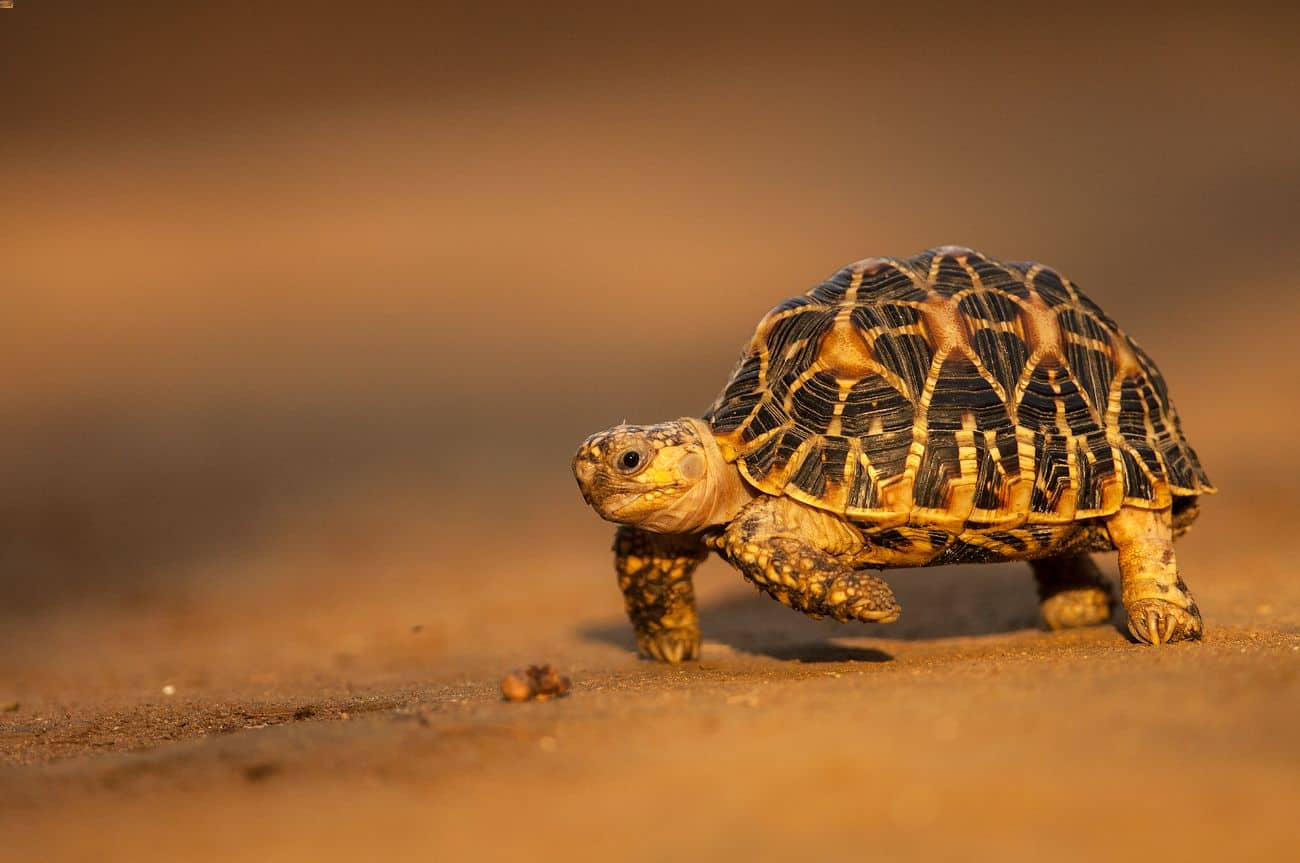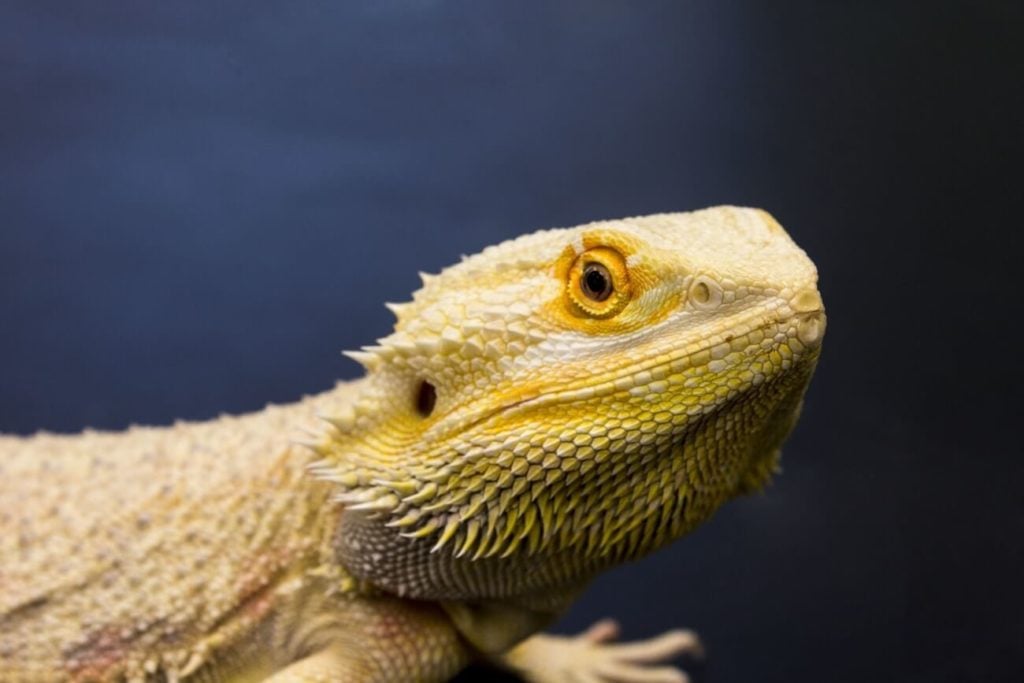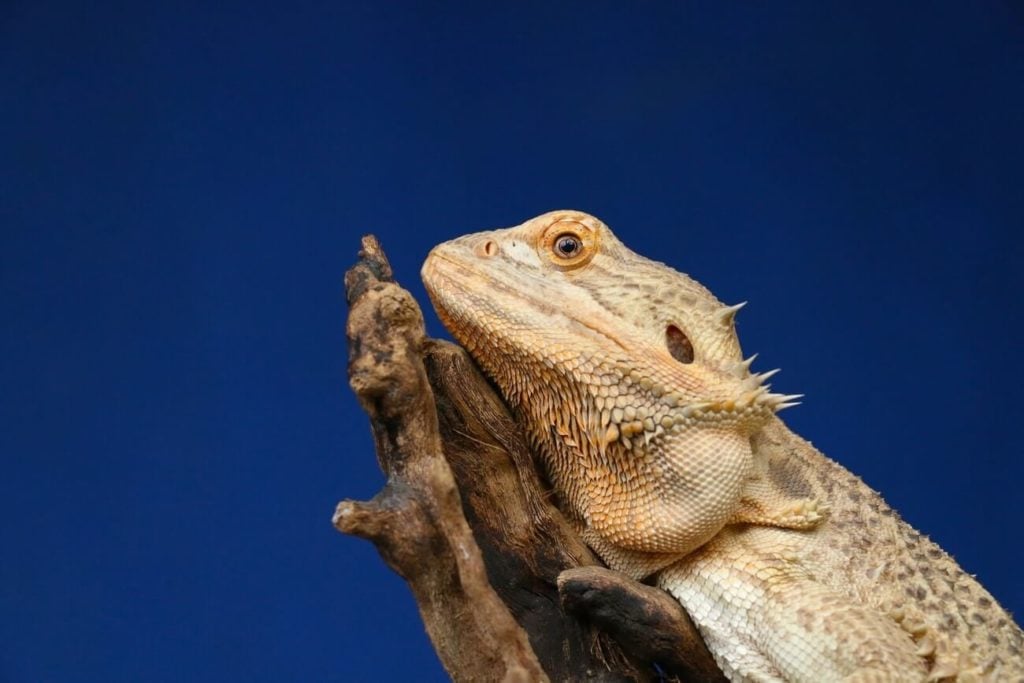Many future tortoise owners struggle when it comes to choosing the best pet tortoise for them. That’s because there are so many great breeds and species to pick from!
But don’t worry, with a little bit of help it will become easy to make your choice. It doesn’t matter if you’re a beginner looking for a small pet tortoise or an expert seeking a challenge, there’s a type for everybody.
This list has all of our favorite tortoises to keep as pets at home. Simply scroll through and pick the one that catches your eye!
Greek Tortoise
Small, even-tempered, and tolerant of many living arrangements, the Greek tortoise makes an excellent pet. For new tortoise-owners and experienced caretakers alike, the Greek tortoise is relatively easy to care for (which makes them great for beginners). This, no doubt, contributes to its popularity in the reptile trade.
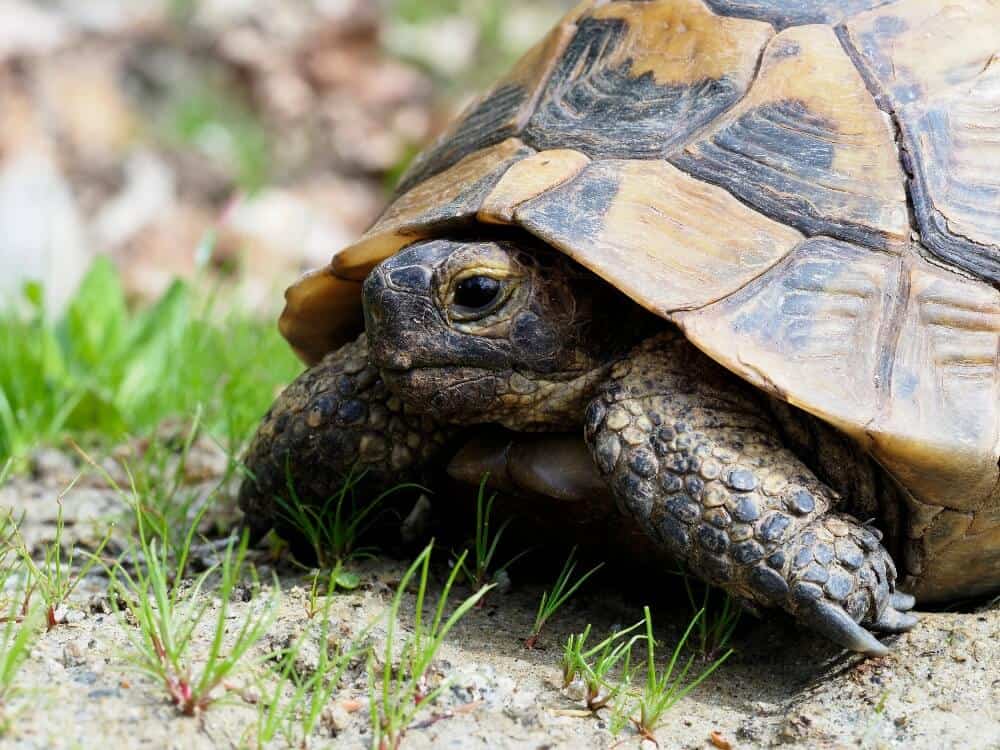
This species features a tall and steeply curved carapace. The shell features scutes of rich tan and dark black. The arrangement of the scutes mimics the look of Greek mosaics, which is how these tortoises get their common name.
Reaching only five to eight inches as an adult, these pet tortoises don’t need a massive enclosure to stay happy. Furthermore, they are not picky when it comes to decor. In the wild, these tortoises are quite widespread and don’t stick to a specific type of environment. As a result, they do just fine in any well-decorated habitat.
As long as you have a natural-looking setup with edible plants, a tortoise-safe substrate, and some hide boxes, they can thrive in captivity.
In terms of temperament, the Greek tortoise is pretty mellow. They are peaceful creatures that don’t cause much trouble. The only exception is when they are living in cramped enclosures. These reptiles aren’t very keen on handling, either!
Pancake Tortoise
The affectionately named pancake tortoise is an interesting little reptile to care for! As you can guess from their common name, these pet tortoises are much flatter than other species! Instead of the tall shells that tortoises are known for, pancakes have a broad and flat shell.
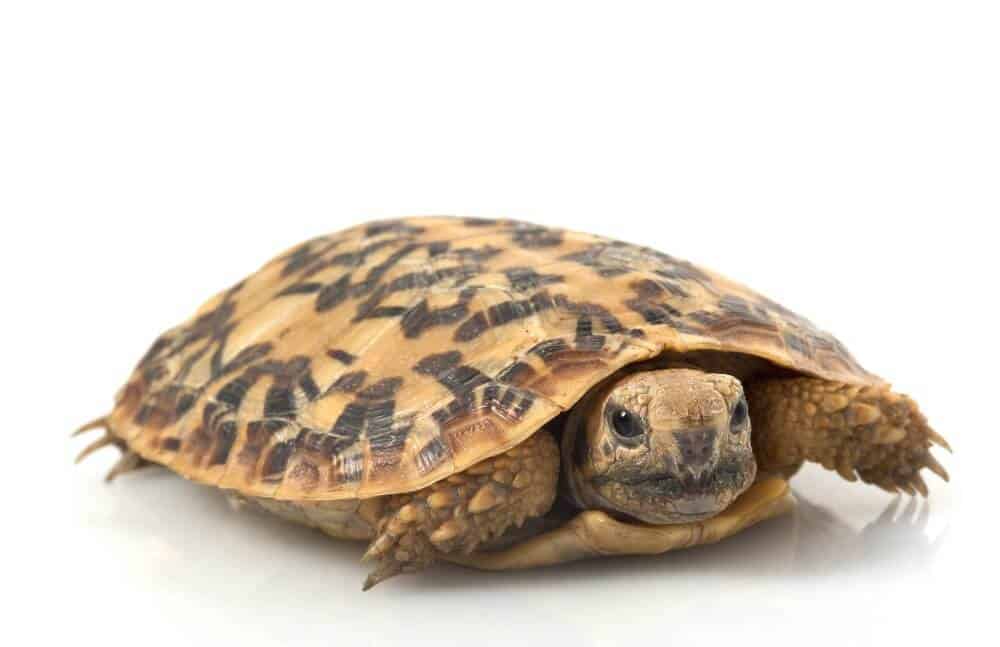
Native to Southern Kenya and parts of Tanzania, pancake tortoises thrive in scrub forests and rocky hills. At one time, the exportation of this species was common. Unfortunately, this harmed wild populations. Today, the species is quite rare and usually only available from breeders.
In captivity, they prefer much of the same environment. You can keep them indoors in a traditional enclosure or outside if the weather permits it.
Wherever you keep them, you must be careful about preventing escape! Thanks to their flat bodies, these critters can slip under narrow cracks. They’re also surprisingly good climbers!
Pancake tortoises are easy to please when it comes to food. Natural herbivores, these reptiles have a healthy appetite for plant-based foods. They enjoy a wide variety of leafy greens and dry grasses. The tortoises also enjoy fruits and vegetables.
Leopard Tortoise
Here’s a species that’s on the larger side of the size spectrum. Reaching roughly 10 to 18 inches as adults, leopard tortoises are the fourth-largest species in the world!
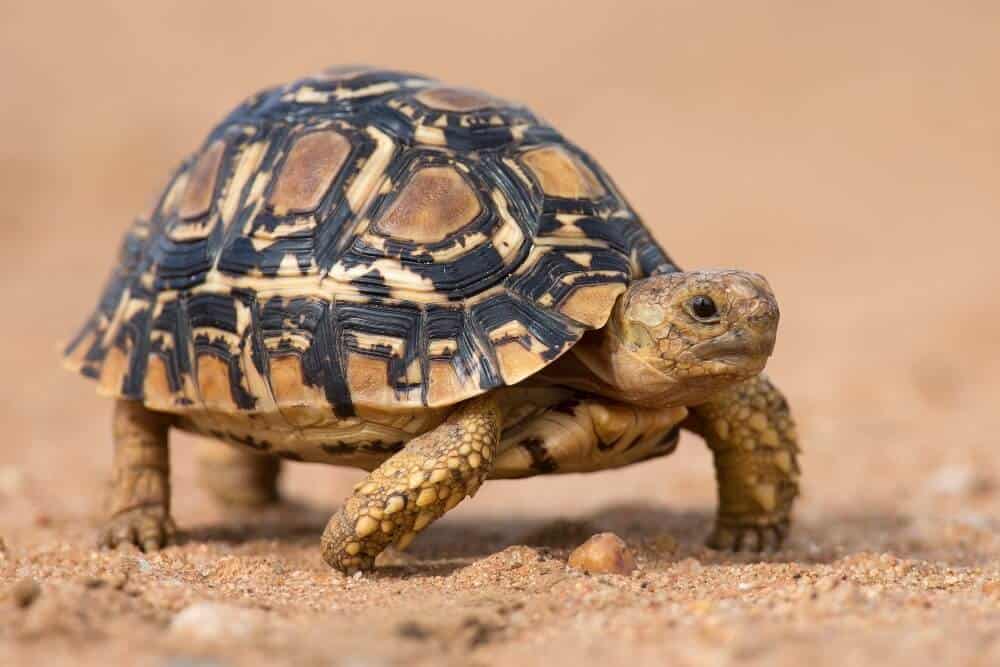
It’s not hard to see why this pet tortoise breed is so loved in the herpetology community. The shell is unique, featuring a distinct pattern that stands out in a crowd. The base color of the shell is usually tan or light brown. However, splotches of black create a spotted effect that looks like the fur of a leopard.
The shell is also very tall. Like other tortoise species, the center of the carapace is steep and rounded. This can make things difficult when setting up a suitable habitat.
Leopard tortoises need sizable enclosures to stay happy and enriched. Many owners like to keep them outdoors. They require relatively warm temperatures and a basking spot that’s at least 95 degrees Fahrenheit!
The good news is that this species isn’t keen on climbing. They like to stick to the ground and spend their time foraging for snacks. As herbivores, they do best when the enclosure has live grass for grazing.
Marginated Tortoise
The marginated tortoise is a beautiful species with a distinct shell. As juveniles, the shell takes on shades of black and pearly white. However, this coloration fades to a dark gray as the tortoise gets older.
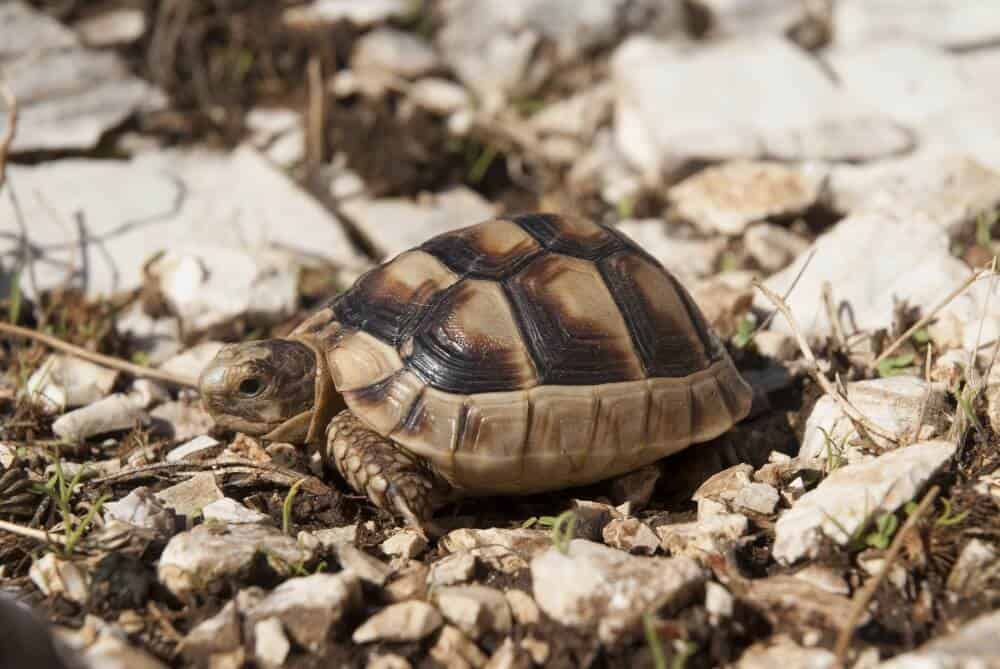
The most recognizable trait of this reptile is the arrangement of the scutes. The outermost scutes on the perimeter of the carapace, called the marginal scutes, flare out. This gives the tortoise a unique silhouette that almost looks like it’s wearing a skirt!
The wild distribution of this tortoise breed is relatively limited. It’s mostly found in isolated populations throughout Southern Greece and Italy. However, this species is prolific in captivity. Thanks to the success of breeders, it’s readily available across the globe.
Considered a medium-sized tortoise, marginated tortoises reach lengths of 12 to 15 inches when fully grown. Like other species of this size, these pet tortoises require sizable enclosures. They do fine indoors or out, but they require some extra security to stay safe.
Marginated tortoises love to burrow. They are also capable of climbing short walls, so you must plan for every escape route when creating a suitable home.
Red-Footed Tortoise
The red-footed tortoise comes from Central and South America. It’s steadily gotten more popular in the reptile trade. Thanks to its active nature and unique appearance, this type of pet tortoise is quite popular among collectors and beginner reptile fans alike.
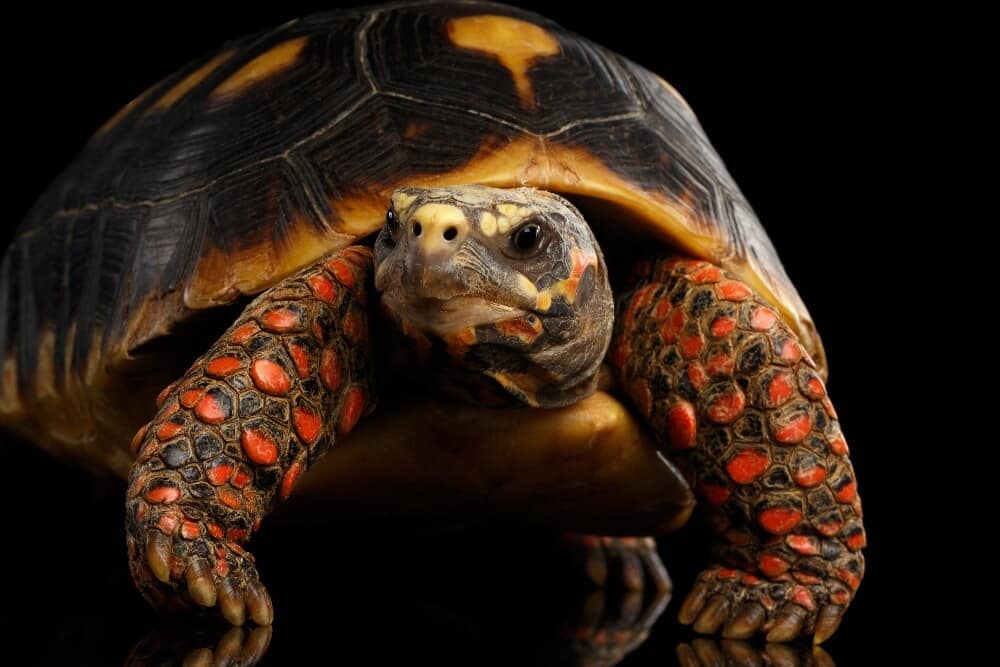
These tortoises get their common name from the distinct coloration of their skin. The legs feature several brightly colored scales. The red scales are sporadic, creating a spotted appearance. You may even see some tortoises with red along the face and head.
The carapace is more muted. The raised scutes are typically dark brown, black, or gray. However, the raised center usually features a splash of light tan.
Red-footed tortoises are long-lived creatures. With proper care, most will live anywhere between 30 and 50 years in captivity!
With a lifespan as long as that, creating the perfect home is a must! Luckily, these pet tortoises aren’t super picky about decor. They prefer to have edible plants, a burrow-friendly substrate, and some hide boxes. As long as you have those essentials, these reptiles can live happy lives without a care in the world.
Hermann’s Tortoise
While not as popular as some of the other best pet tortoises, the Hermann’s tortoise is deserving of your attention! These docile creatures make wonderful pets. They can be a challenge to care for, but the hard work is well worth it!
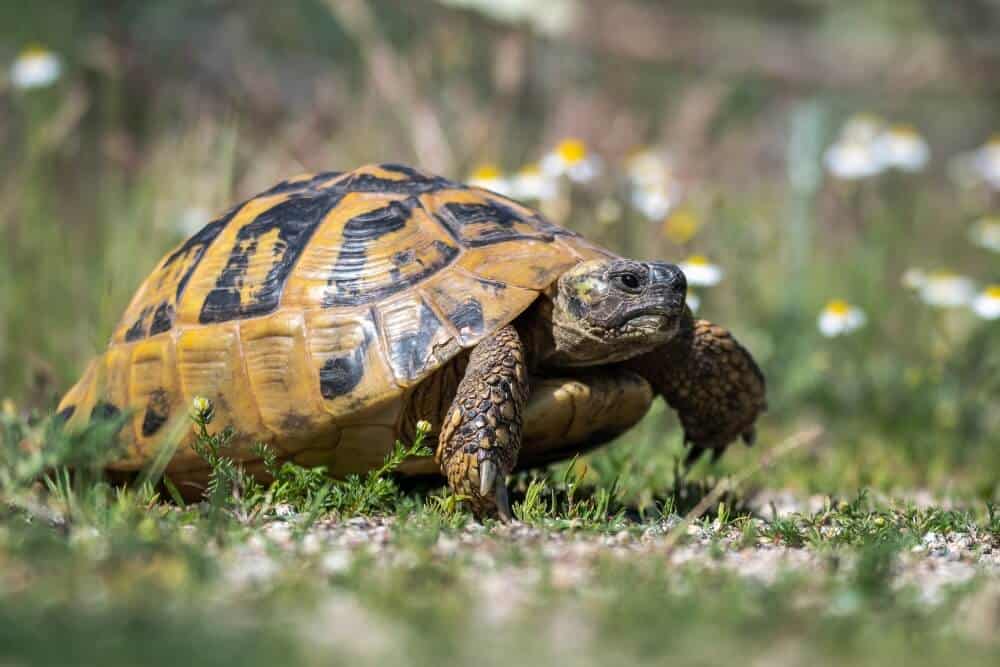
There are two main subspecies of Hermann’s tortoises. The Western Hermann’s tortoise is the smaller of the two, reaching lengths of about six to eight inches. The Eastern Hermann’s tortoise is a bit larger at 11 inches when fully grown.
Despite the size differences, the care requirements for each subspecies are identical. They come from similar environments. Generally, you can find these tortoises living on rocky hillsides or lush evergreen forests.
In captivity, replicating that natural habitat is crucial. They need plants and rocks to thrive. Of course, a hide box for protection is important as well.
Hermann’s tortoises can tolerate a relatively wide temperature range. They do best when daytime temperatures are between 80 and 86 degrees Fahrenheit. But, they can tolerate nighttime temperatures as low as 60 degrees.
Burmese Mountain Tortoise
Here’s a large pet tortoise species that is best reserved for experienced herpetology fans. Reaching lengths of up to two feet, the Burmese mountain tortoise is a behemoth! They can weigh up to 100 pounds in captivity.
In the wild, these tortoises are found throughout Myanmar, Malaysia, Thailand, and Sumatra. Wild specimens are protected. However, captive-bred tortoises are readily available in many countries.
For the most part, Burmese mountain tortoises aren’t difficult to care for. They are easy-going and will feed on whatever they can get. However, their large size does present a unique challenge for owners!
If you have the room, you can keep Burmese mountain tortoises inside. But, they will require a full room!. As a result, most will create secure outdoor enclosures.
One cool thing about this species is that they can stay in groups or pairs. In a large outdoor pen, you can house several tortoises together without experiencing too many issues.
Russian Tortoise
The Russian tortoise is one of the more popular tortoise breeds in the trade. Spend a few minutes with one and you’ll see why!
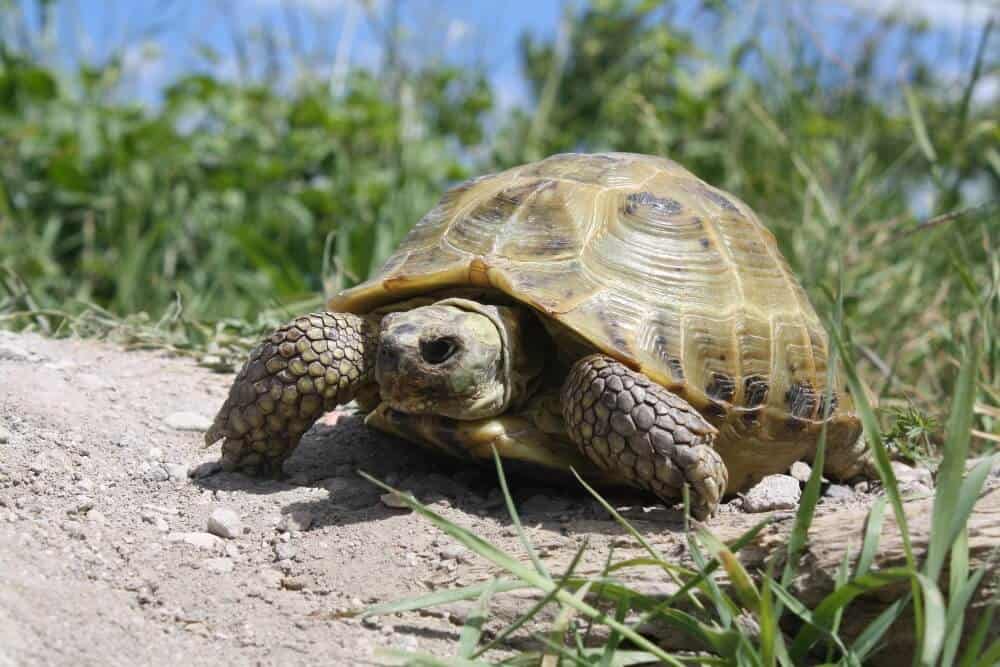
These creatures are rather active compared to other species. Not only that, but they are easy to care for. Pair that with their beautiful appearance and choosing this species is a no-brainer for both beginners and experienced owners!
The shell of the Russian tortoise features shades of olive green, tan, black, and brown. While most tortoises have dark scutes with a lighter center, the scutes of the Russian tortoise are the opposite. The ridges are lighter in color while the raised portion is darker.
Another distinct feature is the claws. This species is sporting four sharp claws on each foot. They help the tortoise burrow in the substrate and climb on obstacles.
Needless to say, creating a secure environment for this reptile is a must! They can live inside an appropriately sized terrarium or vivarium. Or, you can keep them outside.
Whatever you choose, it’s important to make sure that the enclosure has tall walls that penetrate deep into the substrate to prevent escape.
Elongated Tortoise
Can you guess what the most defining characteristic of this species is? It has an elongated shell, making it look more oval than other species.
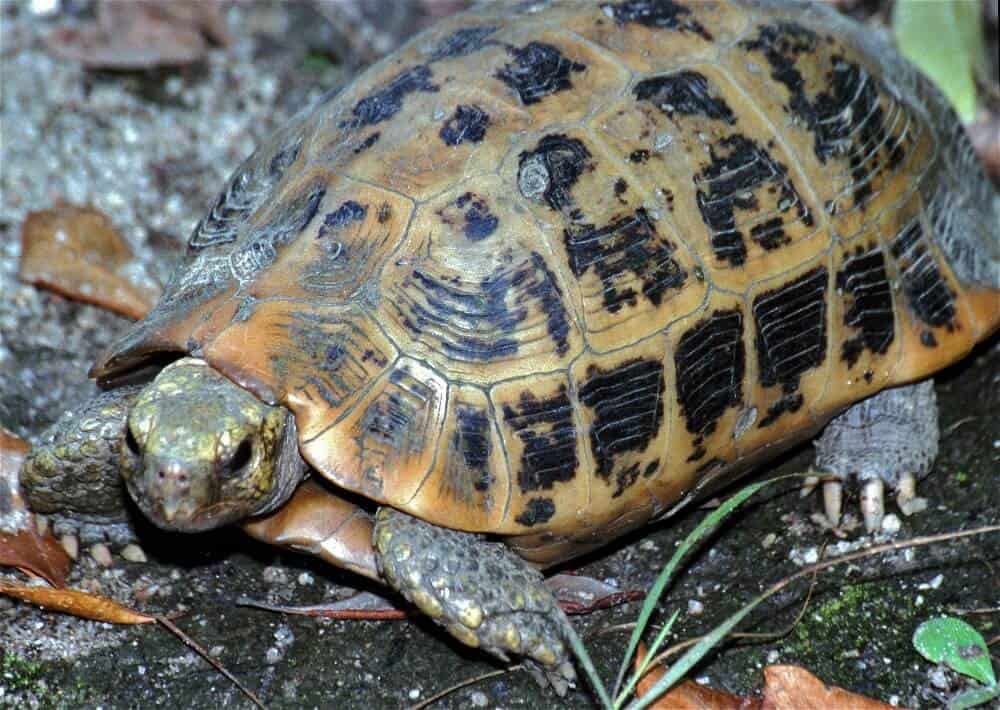
On average, an adult elongated tortoise will reach lengths of 12 to 14 inches. They’re pretty manageable in terms of size. This is especially true when you consider the oval shape of the reptile.
Generally, females are wider than males. They appear more rounded. but they still take on that signature shape the species is known for.
Elongated tortoises come from tropical forests throughout Asia. As a result, their needs are a bit different than other types of pet tortoises. They don’t like direct sunlight. In fact, they’re not keen on basking in the sun.
Instead, they prefer to have environments that are covered in plants. They enjoy wallowing in leaf litter. These tortoises also like to stick close to the bases of plants.
The biggest challenge of this species is creating the right temperature and humidity gradient. You must create separate zones, including a dry zone and a humid zone, to keep these animals happy. Thus, a long enclosure is usually the best choice for these tortoises.
Indian Star Tortoise
Indian star tortoises are one of the most beautiful species around! They are aptly named after the eye-catching pattern on their shell.
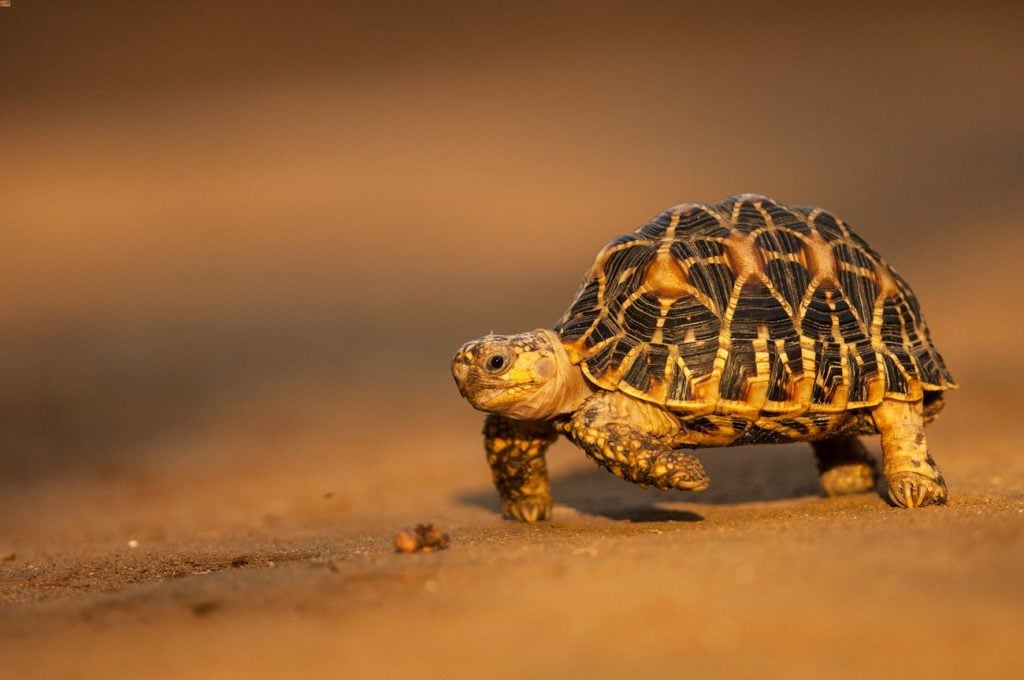
For most pet tortoises, the individual scutes have a simple color gradient. But that’s not the case with the Indian star tortoise. Each scute has a base color of dark brown or black. Emanating from the center of the scute is bright yellow or tan lines.
These lines create a star-like pattern, which is repeated over and over again on several scutes throughout the carapace. It’s a sight to behold and makes identifying these creatures a breeze!
Native to arid environments and brush forests throughout India, Sri Lanka, and Pakistan, the Indian star tortoise is a big fan of humidity. It requires humidity levels as high as 80 percent throughout the day! To maintain those levels, having plants and absorbent substrate material is recommended.
This pet tortoise breed will also need a dish of water to soak.
Sulcata Tortoise
Originally from East Africa, the sulcata tortoise is often seen in zoos and conservatories. But, they’re also a highly sought-after species in the pet trade. They are one of the largest tortoise species in the world, so caring for one is not for the faint of heart.
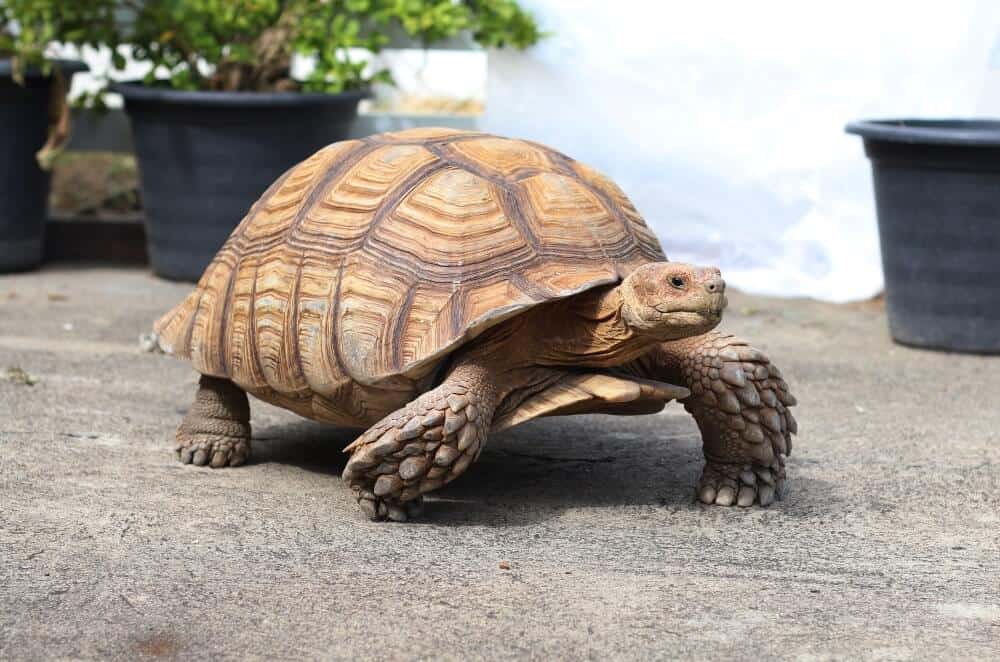
Full-grown tortoises can reach 25 to 30 inches in size and tip the scales at over 100 pounds. Not only that, but they have a long lifespan. In good living conditions, a sulcata tortoise can live for 70 years or more!
Thanks to their massive size, sulcata tortoises need a large outdoor enclosure. They love to explore and move around the habitat, so you cannot keep these creatures in confined spaces.
Most owners will build a dedicated enclosure using tall concrete walls. While you might think that wooden fences would suffice, these reptiles are quite strong. They can easily blow through wood fences.
These pet tortoises can also escape by other means. They are capable of climbing objects and burrowing in the substrate. So, take some extra time when planning the perfect habitat!
Yellow-Footed Tortoise
The yellow-footed tortoise is very similar to the red-footed tortoise. However, it doesn’t feature the same intense coloration. But that doesn’t mean that this species is any less beautiful!
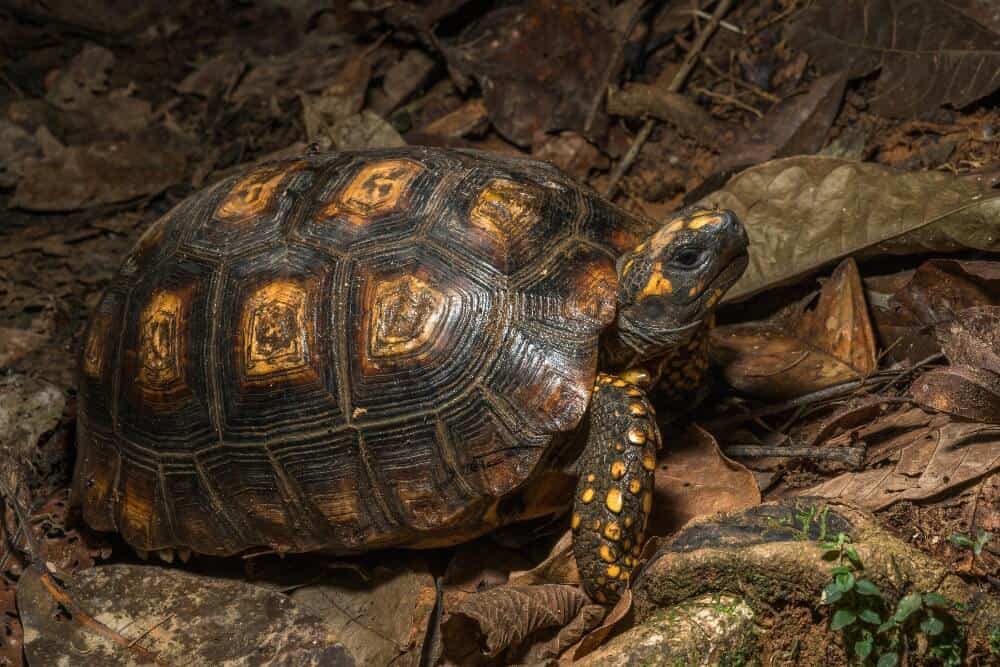
These pet tortoises are sporting tall shells covered in ridged scutes. The scutes feature a darker perimeter and a light tan center. A similar yellowish-tan color is found throughout the skin of the tortoise.
The color adds some visual interest to the tortoise’s dark brown skin. You can find splashes of yellow throughout the feet, head, and face.
The yellow-footed tortoise is the largest tortoise species of mainland South America. Typically, captive specimens will reach lengths of about 14 inches. However, they are capable of getting bigger in the right conditions. Some specimens have reportedly grown to reach lengths of 24 to 28 inches!
Natural omnivores, the yellow-footed tortoise thrives with a varied diet. They primarily eat plant-based foods, but high-protein snacks a few times a month are important, too.
Egyptian Tortoise
The Egyptian tortoise is still relatively new to the pet trade. It was introduced to the herpetology community about 20 years ago. But, that hasn’t stopped it from being a favorite among collectors.
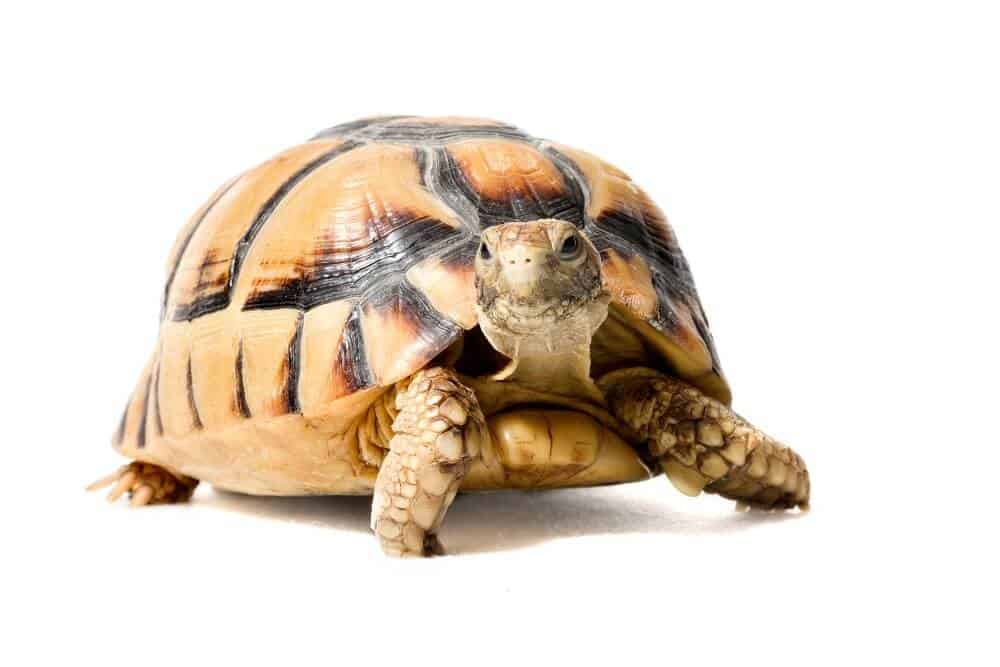
One of the biggest reasons why people love this species is its size. Adults only reach four or five inches long! They are one of the smallest pet tortoise species in the world.
Getting your hands on an Egyptian tortoise isn’t easy. These creatures are protected on a national and international level. Imports are strictly prohibited. That said, there are several established breeders out there.
If you’re lucky enough to find one, setting up the right environment can be a bit of a challenge, too. They come from harsh desert habitats. Water and vegetation are sparse.
Unfortunately, Egyptian tortoises don’t have a wide comfort range when it comes to temperature and humidity levels. They can get finicky if things aren’t just right. So, you must invest in proper measurement equipment to ensure that conditions are within the accepted parameters at all times.
Time To Pick!
Now that you know about each of the best pet tortoise breeds, all that’s left is to pick your favorite!
It’s always smart to choose a species that fits with the kind of care you’re able to provide. Don’t pick up a massive tortoise if you live in an apartment!
We hope you found this list helpful in your search for your next pet. Over time we’ll be creating and linking to additional care guides for each type of tortoise to help prepare you for ownership!

